Opinion & Analysis
A True Story About Putters (Part 2)

In my previous article, I told the true story of when I encountered a “genius IQ” and his putter design. In our conversation, I pointed out a major flaw, whereupon he decided that the flaw was me and our relationship was short lived.
Let’s change the outcome for the purposes of looking at putters as a product. For my standard fee of a dozen golf balls, I’ve agreed to offer advice to help this inventor and his backers. Starting with the putter itself, our final head design ended as technically perfect as modern science could produce. And let me be clear here, I’m NOT going into detail about the putter — that really isn’t the point of the story.
I could describe the optimal dwell time on the face supplied by grooved inserts, the inertial factors as described by weight distribution, available lofts, custom fitting options, a variety of grips — the best of the best — and test data to show why. Someone will probably comment that I didn’t include X, and my answer is, “Yes we did.” I repeat, it’s the perfectly designed putter.
I want to emphasize what I’ve written. There are dozens if not hundreds of putter designers who honestly believe they have a better product. I’m saying, “Fine, I agree.” We are starting this with the best.
The term “the best” is a very narrow window. There are putters used on Tour that are more than 20 years old (more than 70 years old if you count the Bulls Eye). Are they technically inferior? Let’s match the confidence someone has using his 20-year-old putter under pressure versus something ultra modern that doesn’t deliver the same reassurance. I’m not anti-technology. I’m pointing out that the final environment is both inconsistent (because of the green surfaces) and highly psychological. Since we’re dealing with humans, it’s unavoidable.
Now what? My genius friend and his backers are not dreamers. They desire a commercial success. That means one thing, get the putter used on Tour. It’s very simple in the mind of the consumer. If the folks making a living use it then there must be value, and if not it’s just another putter.
There is a Plan B: Millions of dollars spent on advertising in an attempt to convince consumers that the putter is superior regardless of Tour usage. The track record for this approach would have to be upgraded to unsuccessful. Taking my advice, it’s a non-strategy.
So it’s the Tour. How do we start? Tour players on a putting green are in their office and as such do not care to be interrupted. That said, there is a Tuesday window for experimentation, but access is the challenge. We are non-entities wandering around with putters — no credentials, thus no access. If we knew who, we could look for a tour rep and find one who would give us reasonable access, so let’s assume that is the case.
This rep has the job of convincing Tour players to try the putter while telling them about its superior technical merits. This is very difficult. There are several independent putter reps all with the same objective, and the companies that make the brands the players use have reps out there making sure they don’t switch. With putters, the players are interested in the look at address, feel and how the ball rolls. The overwhelming majority could care less about the technical story involving the design. They are the ultimate lab and if they say the putter looks funny or feels bad, it’s branded. Game over!
But we are on a roll (sorry couldn’t help myself), our rep gets the putter in the hands of a couple of guys who have been struggling on the greens and they use it in the Wednesday Pro-Am. Let’s say they make a couple of bombs, don’t miss any short ones and the putter goes in their bag.
Isn’t this exactly what we wanted? The answer is partially. You see, getting the putter on Tour isn’t enough. It’s Step 1, but success means several players using our putter and the reason is television. One or two players have low odds of TV time, but several means we have a chance.
In our perfect scenario, these two guys have to putt so well that other players notice and pretty soon we have a dozen, maybe even 20 even players using our putter, and our phone is ringing with their agents asking about playing contracts. Now we have arrived!
Not exactly.
The design of the putter must be such that when used on TV it is so unique that viewers instantly recognize it in their favorite golf store. Want a perfect example? Odyssey putters were not only uniquely identifiable, but told a visual story, alignment. Their overwhelming success completely disrupted the putter market.
My genius friend has a unique design, but it’s not visual enough to jump off the TV screens. This is a critical juncture. The product is good, it has some tour success now the consumer must be “educated.” Two words, BIG Money. And remember that it takes at least two or three years for the message to fully penetrate the minds (and wallets) of the consumer.
At this juncture, I’d advise my friend and his backers not to jump into the putter business, but approach the big companies and shoot for a royalty deal.
The “big guys” have seen this movie, and they are busy dissecting the design and patent to see where they could compete if they choose. They have staffs of engineers to assign to the project and not just the design in hand, but a succession of variations. They want to make money and will make a deal; you have to be able to define what is acceptable.
This exact scenario is the major reason why nearly all independent putter companies that have tried to compete directly with the major equipment companies have gone broke or sold for a value less than the original investment.
I would strongly advise the genius and his group to have an excellent website, tell of the Tour success (and be prepared to pay tour contracts for continued usage) and try and build a consumer groundswell. In the world of introducing a new putter that’s a win, and the big guys are aware.
- LIKE37
- LEGIT199
- WOW25
- LOL10
- IDHT2
- FLOP21
- OB5
- SHANK56
Opinion & Analysis
The Wedge Guy: What really makes a wedge work? Part 1

Of all the clubs in our bags, wedges are almost always the simplest in construction and, therefore, the easiest to analyze what might make one work differently from another if you know what to look for.
Wedges are a lot less mysterious than drivers, of course, as the major brands are working with a lot of “pixie dust” inside these modern marvels. That’s carrying over more to irons now, with so many new models featuring internal multi-material technologies, and almost all of them having a “badge” or insert in the back to allow more complex graphics while hiding the actual distribution of mass.
But when it comes to wedges, most on the market today are still single pieces of molded steel, either cast or forged into that shape. So, if you look closely at where the mass is distributed, it’s pretty clear how that wedge is going to perform.
To start, because of their wider soles, the majority of the mass of almost any wedge is along the bottom third of the clubhead. So, the best wedge shots are always those hit between the 2nd and 5th grooves so that more mass is directly behind that impact. Elite tour professionals practice incessantly to learn to do that consistently, wearing out a spot about the size of a penny right there. If impact moves higher than that, the face is dramatically thinner, so smash factor is compromised significantly, which reduces the overall distance the ball will fly.
Every one of us, tour players included, knows that maddening shot that we feel a bit high on the face and it doesn’t go anywhere, it’s not your fault.
If your wedges show a wear pattern the size of a silver dollar, and centered above the 3rd or 4th groove, you are not getting anywhere near the same performance from shot to shot. Robot testing proves impact even two to three grooves higher in the face can cause distance loss of up to 35 to 55 feet with modern ‘tour design’ wedges.
In addition, as impact moves above the center of mass, the golf club principle of gear effect causes the ball to fly higher with less spin. Think of modern drivers for a minute. The “holy grail” of driving is high launch and low spin, and the driver engineers are pulling out all stops to get the mass as low in the clubhead as possible to optimize this combination.
Where is all the mass in your wedges? Low. So, disregarding the higher lofts, wedges “want” to launch the ball high with low spin – exactly the opposite of what good wedge play requires penetrating ball flight with high spin.
While almost all major brand wedges have begun putting a tiny bit more thickness in the top portion of the clubhead, conventional and modern ‘tour design’ wedges perform pretty much like they always have. Elite players learn to hit those crisp, spinny penetrating wedge shots by spending lots of practice time learning to consistently make contact low in the face.
So, what about grooves and face texture?
Grooves on any club can only do so much, and no one has any material advantage here. The USGA tightly defines what we manufacturers can do with grooves and face texture, and modern manufacturing techniques allow all of us to push those limits ever closer. And we all do. End of story.
Then there’s the topic of bounce and grinds, the most complex and confusing part of the wedge formula. Many top brands offer a complex array of sole configurations, all of them admittedly specialized to a particular kind of lie or turf conditions, and/or a particular divot pattern.
But if you don’t play the same turf all the time, and make the same size divot on every swing, how would you ever figure this out?
The only way is to take any wedge you are considering and play it a few rounds, hitting all the shots you face and observing the results. There’s simply no other way.
So, hopefully this will inspire a lively conversation in our comments section, and I’ll chime in to answer any questions you might have.
And next week, I’ll dive into the rest of the wedge formula. Yes, shafts, grips and specifications are essential, too.
- LIKE14
- LEGIT4
- WOW1
- LOL1
- IDHT2
- FLOP2
- OB1
- SHANK1
Golf's Perfect Imperfections
Golf’s Perfect Imperfections: Amazing Session with Performance Coach Savannah Meyer-Clement

In this week’s episode, we spent some time with performance coach Savannah Meyer-Clement who provides many useful insights that you’ll be able to implement on the golf course.
- LIKE0
- LEGIT0
- WOW0
- LOL0
- IDHT0
- FLOP0
- OB0
- SHANK0
19th Hole
Vincenzi’s 2024 RBC Heritage betting preview: Patrick Cantlay ready to get back inside winner’s circle

Just a two-hour drive from Augusta National, the PGA TOUR heads to Harbour Town Golf Links in Hilton Head Island, S.C. Hilton Head Island is a golfer’s paradise and Harbour Town is one of the most beautiful and scenic courses on the PGA TOUR.
Harbour Town Golf Links is a par-71 that measures 7,121 yards and features Bermuda grass greens. A Pete Dye design, the course is heavily tree lined and features small greens and many dog legs, protecting it from “bomb-and-gauge” type golfers.
The field is loaded this week with 69 golfers with no cut. Last year was quite possibly the best field in RBC Heritage history and the event this week is yet another designated event, meaning there is a $20 million prize pool.
Most of the big names on the PGA Tour will be in attendance this week with the exceptions of Hideki Matsuyama and Viktor Hovland. Additionally, Webb Simpson, Shane Lowry, Gary Woodland and Kevin Kisner have been granted sponsors exemptions.
Past Winners at Harbour Town
- 2023: Matt Fitzpatrick (-17)
- 2022: Jordan Spieth (-13)
- 2021: Stewart Cink (-19)
- 2020: Webb Simpson (-22)
- 2019: CT Pan (-12)
- 2018: Sotoshi Kodaira (-12)
- 2017: Wesley Bryan (-13)
- 2016: Branden Grace (-9)
- 2015: Jim Furyk (-18)
In this article and going forward, I’ll be using the Rabbit Hole by Betsperts Golf data engine to develop my custom model. If you want to build your own model or check out all of the detailed stats, you can sign up using promo code: MATTVIN for 25% off any subscription package (yearly is best value).
Key Stats For Harbour Town
Let’s take a look at key metrics for Harbour Town Golf Links to determine which golfers boast top marks in each category over their past 24 rounds.
Strokes Gained: Approach
Strokes Gained: Approach is exceedingly important this week. The greens at Harbour Town are about half the size of PGA TOUR average and feature the second-smallest greens on the tour. Typical of a Pete Dye design, golfers will pay the price for missed greens.
Total SG: Approach Over Past 24 Rounds
- Scottie Scheffler (+1.27)
- Tom Hoge (+1.27)
- Corey Conners (+1.16)
- Austin Eckroat (+0.95)
- Cameron Young (+0.93)
Good Drive %
The fairways at Harbour Town are tree lined and feature many dog legs. Bombers tend to struggle at the course because it forces layups and doesn’t allow long drivers to overpower it. Accuracy is far more important than power.
Good Drive % Over Past 24 Rounds
- Brice Garnett (88.8%)
- Shane Lowry (+87.2%)
- Akshay Bhatia (+86.0%)
- Si Woo Kim (+85.8%)
- Sepp Straka (+85.1%)
Strokes Gained: Total at Pete Dye Designs
Pete Dye specialists tend to play very well at Harbour Town. Si Woo Kim, Matt Kuchar, Jim Furyk and Webb Simpson are all Pete Dye specialists who have had great success here. It is likely we see some more specialists near the top of the leaderboard this week.
SG: TOT Pete Dye per round over past 36 rounds:
- Xander Schauffele (+2.27)
- Scottie Scheffler (+2.24)
- Ludvig Aberg (+2.11)
- Brian Harman (+1.89)
- Sungjae Im (+1.58)
4. Strokes Gained: Short Game (Bermuda)
Strokes Gained: Short Game factors in both around the green and putting. With many green-side bunkers and tricky green complexes, both statistics will be important. Past winners — such as Jim Furyk, Wes Bryan and Webb Simpson — highlight how crucial the short game skill set is around Harbour Town.
SG: SG Over Past 24 Rounds
- Jordan Spieth (+1.11)
- Taylor Moore (+1.02)
- Wyndham Clark (+0.98)
- Mackenzie Hughes (+0.86)
- Andrew Putnam (+0.83)
5. Greens in Regulation %
The recipe for success at Harbour Town Golf Links is hitting fairways and greens. Missing either will prove to be consequential — golfers must be in total control of the ball to win.
Greens in Regulation % over past 24 rounds:
- Brice Garnett (+75.0%)
- Scottie Scheffler (+69.9%)
- Corey Conners (+69.0%)
- Shane Lowry (+68.3%)
- Patrick Rodgers (+67.6%)
6. Course History
Harbour Town is a course where players who have strong past results at the course always tend to pop up.
Course History over past 24 rounds:
- Patrick Cantlay (+2.34)
- Cam Davis (+2.05)
- J.T. Poston (+1.69)
- Justin Rose (+1.68)
- Tommy Fleetwood (+1.59)
The RBC Heritage Model Rankings
Below, I’ve compiled overall model rankings using a combination of the five key statistical categories previously discussed — SG: Approach (24%), Good Drives (20%), SG: SG (14%), SG: Pete Dye (14%), GIR (14%), and Course History (14%)
- Shane Lowry
- Russell Henley
- Scottie Scheffler
- Xander Schauffele
- Corey Conners
- Wyndham Clark
- Christiaan Bezuidenhout
- Matt Fitzpatrick
- Cameron Young
- Ludvig Aberg
2024 RBC Heritage Picks
Patrick Cantlay +2000 (FanDuel)
With the exception of Scottie Scheffler, the PGA Tour has yet to have any of their star players show peak form during the 2024 season. Last week, Patrick Cantlay, who I believe is a top-5 players on the PGA Tour, took one step closer to regaining the form that’s helped him win eight events on Tour since 2017.
Cantlay limped into the Masters in poor form, but figured it out at Augusta National, finishing in a tie for 20th and ranking 17th for the week in Strokes Gained: Ball Striking. The former FedEx Cup champion will now head to one of his favorite golf courses in Harbour Town, where he’s had immaculate results over the years. In his six trips to the course, he’s only finished worse than 7th one time. The other finishes include three third places (2017, 2019, 2023) and one runner-up finish (2022). In his past 36 rounds at Harbour Town, Cantlay ranks 1st in Strokes Gained: Total per round at the course by a wide margin (+2.36).
Cantlay is winless since the 2022 BMW Championship, which is far too long for a player of his caliber. With signs pointing to the 32-year-old returning to form, a “signature event” at Harbour Town is just what he needs to get back on the winning track.
Tommy Fleetwood +3000 (FanDuel)
I truly believe Tommy Fleetwood will figure out a way to win on American soil in 2024. It’s certainly been a bugaboo for him throughout his career, but he is simply too talented to go another season without winning a PGA Tour event.
At last week’s Masters Tournament, Fleetwood made a Sunday charge and ended up finishing T3 in the event, which was his best ever finish at The Masters. For the week, the Englishman ranked 8th in the field in Strokes Gained: Approach, 10th in Strokes Gained: Ball Striking and 16th in Strokes Gained: Putting.
Harbour Town is a perfect layout for Fleetwood, and he’s had relative success at this Pete Dye design in the past. In his four trips to the course, he’s finished inside of the top 25 three times, with his best finish, T10, coming in 2022. The course is pretty short and can’t be overpowered, which gives an advantage to more accurate players such as Fleetwood. Tommy ranks 8th in the field in Good Drive % and should be able to plot his way along this golf course.
The win is coming for Tommy lad. I believe there’s a chance this treasure of a golf course may be the perfect one for him to finally break through on Tour.
Cameron Young +3300 (FanDuel)
Cameron Young had a solid Masters Tournament last week, which is exactly what I’m looking for in players who I anticipate playing well this week at the RBC Heritage. He finished in a tie for 9th, but never felt the pressure of contending in the event. For the week, Young ranked 6th in Strokes Gained: Off the Tee and 6th in Strokes Gained: Ball Striking.
Despite being one of the longest players off the tee on the PGA Tour, Young has actually played some really good golf on shorter tracks. He finished T3 at Harbour Town in 2023 and ranks 20th in the field in Good Drive% and 16th in Greens in Regulation in his past 24 rounds. He also has strong finishes at other shorter courses that can take driver out of a players hand such as Copperhead and PGA National.
Young is simply one of the best players on the PGA Tour in 2024, and I strongly believe has what it takes to win a PGA Tour event in the very near future.
Corey Conners +5500 (FanDuel)
Corey Conners has had a disappointing year thus far on the PGA Tour, but absolutely loves Harbour Town.
At last week’s Masters Tournament, the Canadian finished T30 but ranked 20th in the field in Strokes Gained: Approach. In his past 24 rounds, Conners ranks 3rd in the field in Strokes Gained: Approach, 3rd in Greens in Regulation % and 24th in Good Drive %.
In Conners’ last four trips to Harbour Town, his worst finish was T31, last season. He finished T4 in 2021, T12 in 2022 and ranks 8th in Strokes Gained: Total at the course over his past 36 rounds.
Conners hasn’t been contending, but his recent finishes have been encouraging as he has finished in the top-25 in each of his past three starts prior to The Masters, including an impressive T13 at The PLAYERS. His recent improvement in ball striking as well as his suitability for Harbour Town makes Conners a high upside bet this week.
Shane Lowry (+7500) (FanDuel)
When these odds were posted after Lowry was announced in the field, I have to admit I was pretty stunned. Despite not offering much win equity on the PGA Tour over the last handful of years, Shane Lowry is still a top caliber player who has the ability to rise to the top of a signature event.
Lowry struggled to score at The Masters last week, but he actually hit the ball really well. The Irishman ranked 1st for Strokes Gained: Approach on the week and 7th in Strokes Gained: Ball Striking. As usual, it was the putter that let him down, as he ranked 60th in the field in Strokes Gained: Putting.
Harbour Town is most definitely one of Lowry’s favorite courses on the PGA Tour. In his six starts there, he’s finished in the top 10 three times, including third twice. Lowry is sensational at Pete Dye designs and ranks 7th in Strokes Gained: Total in his past 36 rounds on Dye tracks.
Lowry is perfect for Harbour Town. In his past 24 rounds, he ranks 5th in Strokes Gained: Approach, 2nd in Good Drive% and 5th in Green in Regulation %. If he figures it out on the greens, Shane could have his first win in America since 2015.
Lucas Glover +12000 (FanDuel)
This is one of my weekly “bet the number” plays as I strongly believe the odds are just too long for a player of Glover’s caliber. The odds have been too long on Glover for a few weeks now, but this is the first event that I can get behind the veteran being able to actually contend at.
Glover is quietly playing good golf and returning to the form he had after the understandable regression after his two massive victories at the end of 2023. He finished T20 at The Masters, which was his best ever finish at Augusta National. For the week, Lucas ranked 18th for Strokes Gained: Approach and 20th in Strokes Gained: Ball Striking.
Over his past 24 rounds, Glover ranks 9th in Strokes Gained: Approach and 13th in Good Drive %. Harbour Town is a short course that the 44-year-old will be able to keep up with the top players on Tour off the tee. He’s played the course more than 20 times, with mixed results. His best finishes at Harbour Town include a T7 in 2008, but recently has a finish of T21 in 2020.
Glover has proven he can contend with the stars of the Tour on any given week, and this number is flat out disrespectful.
- LIKE30
- LEGIT5
- WOW2
- LOL1
- IDHT1
- FLOP2
- OB0
- SHANK2
-

 19th Hole1 week ago
19th Hole1 week agoDave Portnoy places monstrous outright bet for the 2024 Masters
-

 19th Hole3 weeks ago
19th Hole3 weeks agoThings got heated at the Houston Open between Tony Finau and Alejandro Tosti. Here’s why
-

 19th Hole1 week ago
19th Hole1 week agoTiger Woods arrives at 2024 Masters equipped with a putter that may surprise you
-

 19th Hole2 weeks ago
19th Hole2 weeks agoReport: Tiger Woods has ‘eliminated sex’ in preparation for the 2024 Masters
-

 19th Hole4 days ago
19th Hole4 days agoTwo star names reportedly blanked Jon Rahm all week at the Masters
-

 19th Hole4 days ago
19th Hole4 days agoNeal Shipley presser ends in awkward fashion after reporter claims Tiger handed him note on 8th fairway
-

 19th Hole3 days ago
19th Hole3 days agoReport: LIV Golf identifies latest star name they hope to sign to breakaway tour
-

 19th Hole2 weeks ago
19th Hole2 weeks agoAddiction, spinal fusion, and scam artists – Everything Anthony Kim revealed in candid interview with David Feherty



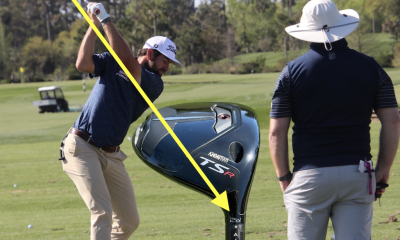

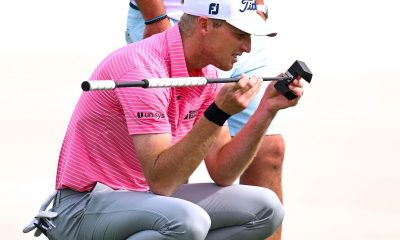

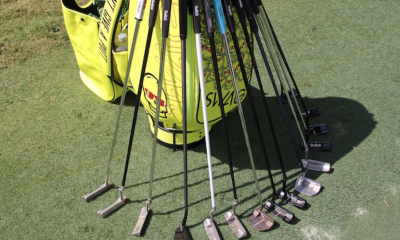

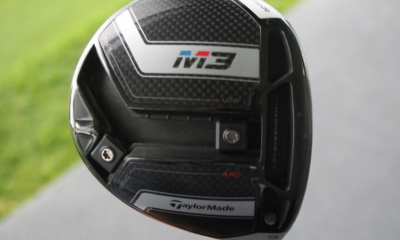

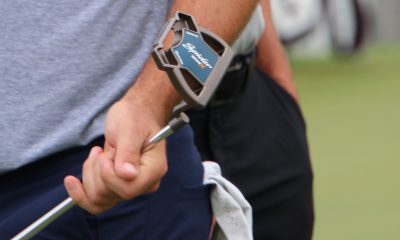
















Walter Pendleton
Jun 24, 2015 at 1:33 pm
Mr. Adams…you made an excellent point in this article when you said, Odessey CHANGED THE WORLD when they acknowledged alignment was the cornerstone of putting. You are so right Mr. Adams! However, I would like to add or comment that the USGA & R&A restrictions on “putter design” have stifled putting improvement by the average golfer and secondly has been counter productive to growing the game. Bear with me please as I defend my position on the subject. Image for a minute there were no restrictions on putter design, the average player’s handicap fell by 10 strokes and PGA players could score 58 or 59 regularly on tour? Wouldn’t more people enjoy the game, play more golf and buy more putters? I’m almost through…if the objective is to preserve the game, as it was founded some 500 years ago, then lets bring back the 12 original rules of golf and through away the dogma or bible called “The Rules of Golf.” My point is, we ALL know putting is 43% of every shot hit by the average player! If we don’t make putting more fun and golf easier, we risk the game of golf becoming a driving range sport due to its cost, like Japan, here in the United States. No one wants golf to return to its elitist status as a sport. That’s the elephant in the room no one wants to print or talk about in today’s world of golf. In fact, we all know its heading in that direction today! In closing I’ll just say, “Change is the only absolute in this world we know is going to happen…why not look at easing up on the poor golfer that three putts every fourth hole and never makes a fifteen footer! Good design, is just good business!
Regis
Feb 4, 2015 at 1:20 pm
So true Barney. Best putter story ever of course is the Nicklaus Response putter. He used it on somewhat of a lark to win the 1986 Masters. Had a very unique look given the time period involved. MacGregor had forecasted selling 6,000 units total But, Nicklaus’ victory was enough to turn a company forecast of 6,000 putters into sales of 350,000 units by the end of the 1987. In fact, the company received 5,000 orders before noon the day after the Masters. ,
Waqar
Jan 26, 2015 at 9:53 am
The picture above is the Borcerri Golf putter. It has the deepest face of any putter, as high as agolf ball.
I got impact tape and put on the face of my Scottie and putted for 10 mins. To my surprise I noticed that I was stroking my putts in the center but high on the face, at times at the top edge. I putt with ball in the middle of my stance because it helps me with alignment and I tend to pull if I move forward and push if it move it back. The sweet spot is in the middle of the putter face vertically and horizontally. For me to strike the ball in the middle of the face vertically I have to move the ball at least two balls forward and this will result in pulls.
I was an accomplished snooker and pool player. I tend to look at putting as a queue striking a ball. In pool to put topspin one needs to strike the ball above the equator or the queue tip has to be above the the butt end, which it not possible to do. With almost all putters made today one has to strike the ball just below the equator with positive loft and on the sweet spot. The amount of top spin also significantly depends on the softness of the ball cover, friction available on the putter face, and softness of putter face.
For the few gifted individuals, and professionals who spend hours upon hours grooving in a stroke to achieve to stroke the ball on the putter’s sweet spot with positive loft at or just below the equator with the putter face square to the intended line, 90% of the putters are simply not suitable.
Another thing that perplexes me is, is forward role really that important. I feel excessive top role causes distance control issues and lessens the break a players sees. On fast downhill putts it can cause serious anxiety.
No matter with what kind of spin the ball leaves the putter face it will always role eventually. In my opinion the ball must leave the putter face with pure forward momentum with no spin at all. In fact for short putts back spin should be more desirable but it is not probably practical.
I feel the genius is a really a genius is on to something.
Steve zastrow
Jan 19, 2015 at 9:02 pm
Barney..I want one..If it’s that superior tell me about it And I will get Byron to make it…
Ignorant savage
Jan 17, 2015 at 9:06 pm
Does this mean the “Shark Tank” investment might be in trouble? 😉
Barney,
Have really liked your articles and insights but agree with some here. The reason I like your stuff is because it offers a “new” and unseen glimpse through a keyhole into your world. In this case, almost anyone could have written these two pieces and the keyhole was an entire door that most of us had already been opened in one form or another.
Let’s see/hear the stuff you tell your favorite “in-law” after you’ve snuck out of Thanksgivung dinner cleanup and are enjoying bourbon and cigars on the back deck….
Barney Adams
Jan 18, 2015 at 10:44 pm
From my emails a lot of readers have invested time and money in product ideas and I feel an obligation to explain the reality of the business. I understand your comment but in my experience the conversations were about the business. We harbor end some jealousy towards the companies owned by ” big brother” but that’s about as far as things went.
Matthew Bacon
Jan 16, 2015 at 4:55 pm
Let me tell you about the time I met Tiger Woods. Ok, I’m not going to tell you that but here is an interesting story how I once shaved a dog
Preston
Jan 15, 2015 at 2:40 pm
I was hoping for a Paul Harvey like story….
Mr Free Golf
Jan 15, 2015 at 9:58 am
Having been a rep on tour for a major independent putter brand for over ten years, I’ll tell you your scenarios are spot on. Eventually, the brand went into bankruptcy, was purchased for next to nothing, and now the patent is expired with no hopes of being picked up. The putter industry as well as the golf industry has gotten to the point where contracts are made with players including putters. There’s only about 8% of the players, on a weekly basis, that I had a shot at. And, they were bottom feeders. The likelihood of gaining any kind of traction became impossible. Therefore, bankruptcy and an endangered species. For anyone hoping to gain a foothold in this exclusive society, create a website, sell a few out of your garage and at smaller trade shows and sleep well at night.
Andy W
Jan 15, 2015 at 8:13 am
Whoa, am saying I concur & APPRECIATE every word written in your articles. Just pointing out that Pinehurst’s Payne Stewart statue has a Seemore putter, Zack Johnson uses a Seemore to this day, and as far as I know, neither got paid to use that putter. So to me, Seemore has had some “divine timing” as they seem to be flourishing. But as always, I could be wrong. But there was absolutely ZERO trashing on my part.
Golf
Jan 15, 2015 at 7:11 am
Barney, I agree with you 100%. I don’t understand why such extreme bashing and hate attitudes? I see this sort of thing on most articles pertaining to golf anymore. I’ve gotten to where I take a quick look at the comments and if it’s just a bunch of trash, I just simply stop reading the comments. And, please don’t stop writing your articles. I enjoy reading them and learning from people like you that are very knowledgeable about golf equipment and the industry.
katbird
Jan 15, 2015 at 4:23 am
Putters:
Some like ’em hot off the face
Some like ’em soft
Some like ’em loud
Some like ’em muted
Some like ’em long
Some like ’em short
Some like ’em chiseled, like blades
Some like ’em crescent shaped half moon
Some like ’em high MOI
Some like ’em low MOI
Some like ’em aligned with a line towards the hole
Some like ’em designed perpendicular to the target line
Some like fat grips
Some like thin grips
Some like softies…some don’t
…and some just can’t decide….
and like them all at one time or another….
RG
Jan 14, 2015 at 11:23 pm
One of the first things I learned on the way to my degree in Psychology is that half the population has an IQ of 100 or less. Conversely the vast majority of golfers struggle to break 100. The problem with both of these specimens is that they are entitled to opinions.
Thank you for your contributions Barney. Your articles provide insight into the industry that most of us would never know, and your club designs made some of the most dynamic sticks I’ve ever hit.
Sean
Jan 14, 2015 at 9:45 pm
Nice article Barney. It definitely explains the challenges one most be able to overcome and which hurdles are the important ones, and in what order they should be prioritized. Each business has it’s element of success and failure’s based upon unique demand factor’s. I believe golf to probably be the most difficult to break into as a startup.
Slim
Jan 14, 2015 at 8:06 pm
The story/article would have been more interesting if he named names …
Wendell
Jan 14, 2015 at 3:10 pm
How successful was Adams putting line? exactly… just sayin
Chuck
Jan 14, 2015 at 8:56 pm
YES! Putters were extremely successful!
Ted
Jan 14, 2015 at 2:40 pm
Article was to long didn’t read it. I’ll tell you a true story about putting. I got drunk last night and tried to use my pelz putting tutor and got frustrated then went to bed
Eric
Jan 14, 2015 at 2:53 pm
Incredible and relatable.
Johnny
Jan 14, 2015 at 12:26 pm
I really don’t know what it is I’m supposed to get from this story. But then again no one has ever confused me with the guy in the first article with the genius IQ.
Jeffrey Trigger
Jan 14, 2015 at 12:22 pm
only* increase the price tag
Jeffrey Trigger
Jan 14, 2015 at 12:22 pm
I think Charlie is spot on. These gimmicks and bells and whistles on increase the price tag. I have yet to see anybody make a better crafted putter than a Ping, and a lot of good Ping putters are a third of the cost of a Betti or Cameron. If you find a putter that feels good in your hand, all the technology in the world isn’t going to be confidence on the green.
Jeffrey Trigger
Jan 14, 2015 at 12:23 pm
isn’t going to beat* confidence. Wow I should drink some coffee.
Cynic123
Jan 14, 2015 at 11:35 am
I guess Mr. Adams has not heard of Bobby Grace
Scott
Jan 14, 2015 at 10:46 am
I thought that we were going to get a follow up on the mad genius high IQ putter person. I thought that we were going to get – to steal a line from Paul Harvey – “the rest of the story”. A bit of a let down.
bradford
Jan 14, 2015 at 11:38 am
I have to agree, I had my hopes up from episode one…this didn’t add anything. We all already know that tour rep is the only way to sell.
DeeDub
Jan 14, 2015 at 12:08 pm
I agree. The first part had me hooked on what seemed to be based on facts. The second part was a made-up story. Waste of time reading this.
Barney Adams
Jan 16, 2015 at 12:09 am
The “mad genius” ended very badly and I chose to skip that and talk about the industry. As for Bobby Grace and Seemor I’m very familiar with both including their respective market share
tony
Jan 18, 2015 at 2:26 am
She would’ve probably preferred you spoken of her in the female tense.
Andy W
Jan 14, 2015 at 9:02 am
My wife has always been about “divine timing” plays a huge part in all of life’s projects. Thanks Barney for this incredible insight; and be prepared to “Pay to Play” has always been in my mind. Seems there is always an exception, and Seemore seems to be it in the PtoP world.
Shanks for Nothing
Jan 14, 2015 at 8:49 am
Make pay for play illegal. Then we’ll see this pseudo technology that is really marketing slowly be killed off. Only real R&D can survive when pros aren’t making choices based on contract size.
Charlie
Jan 14, 2015 at 8:32 am
Actually, I could care less about the technical story involving the design, because I do care about it.
Ok, really, I got nothing. It really is about branding. Betti, Cameron, etc… There is no way I am paying that money when I could get a $75 Cleveland that was manufactured just as well.
Shanks for Nothing
Jan 14, 2015 at 8:50 am
Je suis Charlie